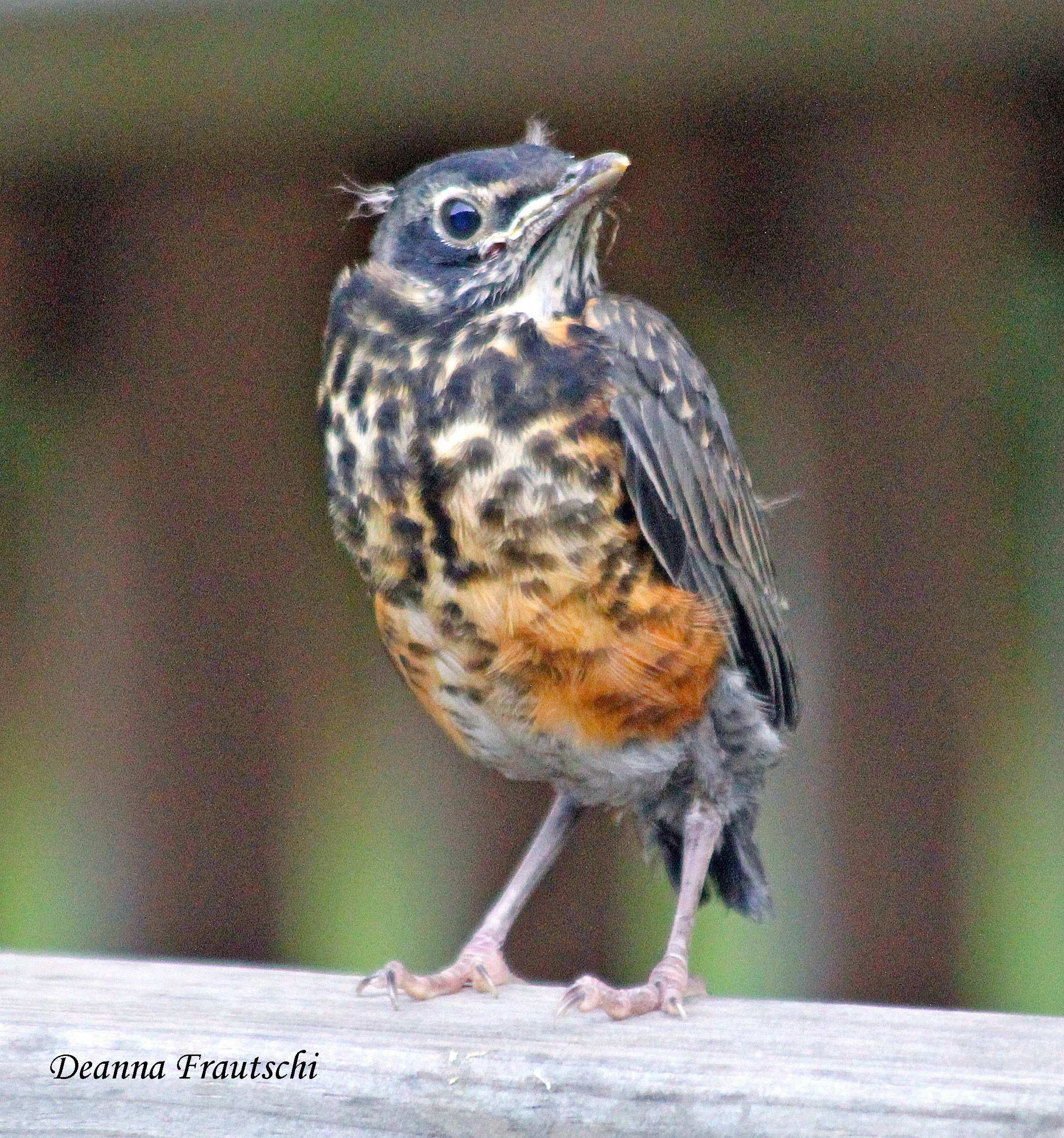The American Robin is one of our most beloved and recognizable birds. About ten inches long, it is the largest member of the North American Thrush family.
Robins are found throughout the United States and Canada. They are dark gray with an orange breast. Females have slightly paler breasts. Juveniles have a spotted breast.
You will often see these birds hopping around on lawns or in parks looking for earthworms. Their diet also consists of insects and berries.

Spring Nesting
Male robins sing in spring to attract mates and to let others know their territorial rights. They sing the most right before their young hatch.
The female builds the nest. She builds it with grasses and fine twigs. The middle layer is often mud lined with fine grasses. The nest is built on horizontal limbs or on a platform or building ledge from five to 20 feet off the ground. Once the eggs are laid, it takes them about two weeks to hatch.

Our Robin Family
One spring, we discovered a robin nest as we were cutting back honeysuckle vines growing around our gazebo entryway. The nest was built on an inside ledge that was part of the structure supporting the roof. (See photos with this article).
Once having discovered it, we left the vines alone for two weeks until the young fledged. It was fun watching them from the other side of the gazebo each day and even more fun watching them fledge as the four left the nest one by one.
Rudy Robin, shown here, was the last to fledge and he caused me a sleepless night since he hadn’t fledged during the day with his three siblings . He remained near the nest under the gazebo roof over night and finally fledged the next morning.

You Can Adopt Too!
What fun for you and your children or grandchildren to find a nest that you can watch and enjoy for a few weeks while the family is raised and before everyone flies away to begin their own lives.
It isn’t hard to find a nest this time of year with so many birds (robins, wrens, chickadees, sparrows, etc.) nesting in shrubs, trees and birdhouses. Just look around your yard or a nearby park and you will likely discover one.
Then read about the bird you have found and share that information with your children. Depending on their ages, they can help with the research too.

A Few Reminders
While it’s fun to observe, keep your distance. You don’t want to scare Mom off of the nest and cause her to interrupt or stop her nesting habits of keeping the young warm and well fed.
Remember that if a young nestling should fall out of the nest before it actually fledges, you can gently put it back since birds don’t have a sense of smell.
Watching a bird raise its young can be entertaining and educational. Good luck with your avian adoption efforts.

Deanna Frautschi is a local Naturalist who is passionate about connecting families with nature. Using her knowledge of wildlife and her photography skills, she helps others enjoy the nature around them. If you have any questions about exploring nature with your children and grandchildren, you may contact Deanna at Decardinal@aol.com. Join the hundreds who follow her on Facebook where she posts photographs and short video clips of birds and other wildlife taken on her travels as well as in her yard. You can also join her "Nature Lady Lessons" and "Hummingbirds Anonymous" Facebook group pages.
Photos by Deanna Frautschi.


